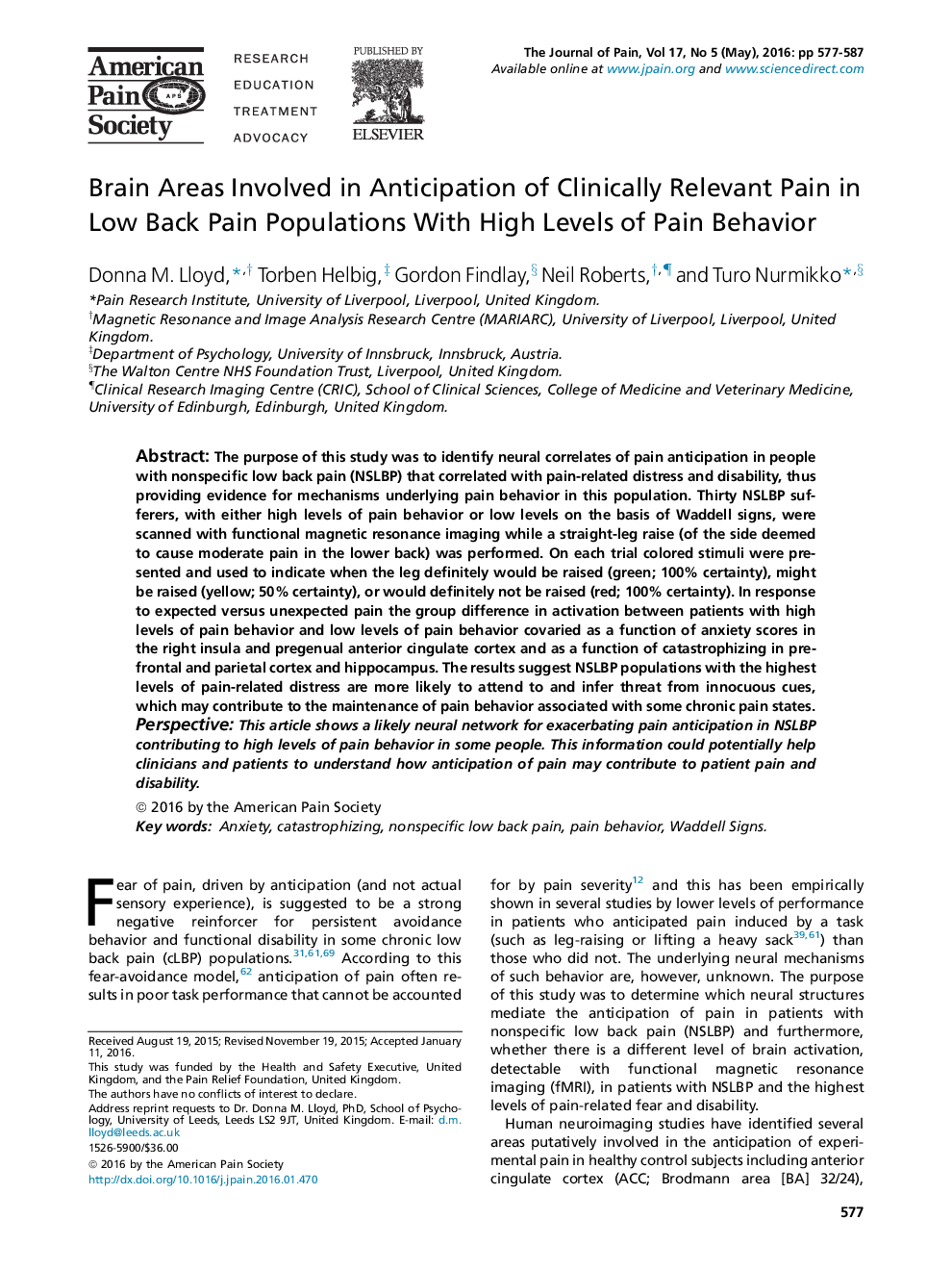| کد مقاله | کد نشریه | سال انتشار | مقاله انگلیسی | نسخه تمام متن |
|---|---|---|---|---|
| 2722802 | 1566720 | 2016 | 11 صفحه PDF | دانلود رایگان |
• Pain behavior seen in chronic low back pain is associated with pain anticipation.
• Brain activity to expected vs. unexpected pain covaried as a function of anxiety.
• This response was seen in right insula and pregenual anterior cingulate cortex.
• Catastrophizing was associated with activity in prefrontal and parietal cortex.
• Pain-related distress in response to innocuous cues may maintain pain behavior.
The purpose of this study was to identify neural correlates of pain anticipation in people with nonspecific low back pain (NSLBP) that correlated with pain-related distress and disability, thus providing evidence for mechanisms underlying pain behavior in this population. Thirty NSLBP sufferers, with either high levels of pain behavior or low levels on the basis of Waddell signs, were scanned with functional magnetic resonance imaging while a straight-leg raise (of the side deemed to cause moderate pain in the lower back) was performed. On each trial colored stimuli were presented and used to indicate when the leg definitely would be raised (green; 100% certainty), might be raised (yellow; 50% certainty), or would definitely not be raised (red; 100% certainty). In response to expected versus unexpected pain the group difference in activation between patients with high levels of pain behavior and low levels of pain behavior covaried as a function of anxiety scores in the right insula and pregenual anterior cingulate cortex and as a function of catastrophizing in prefrontal and parietal cortex and hippocampus. The results suggest NSLBP populations with the highest levels of pain-related distress are more likely to attend to and infer threat from innocuous cues, which may contribute to the maintenance of pain behavior associated with some chronic pain states.PerspectiveThis article shows a likely neural network for exacerbating pain anticipation in NSLBP contributing to high levels of pain behavior in some people. This information could potentially help clinicians and patients to understand how anticipation of pain may contribute to patient pain and disability.
Journal: The Journal of Pain - Volume 17, Issue 5, May 2016, Pages 577–587
